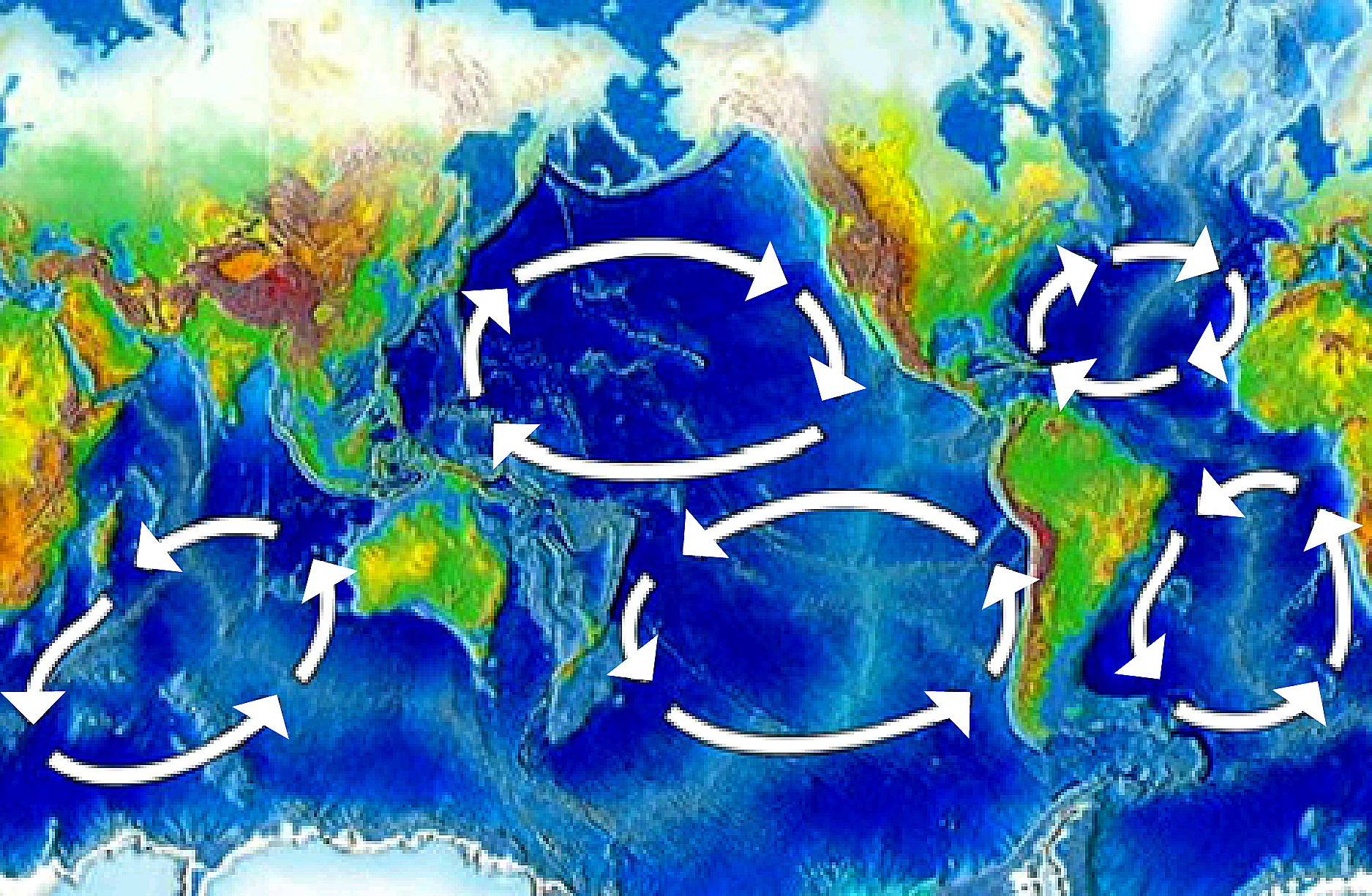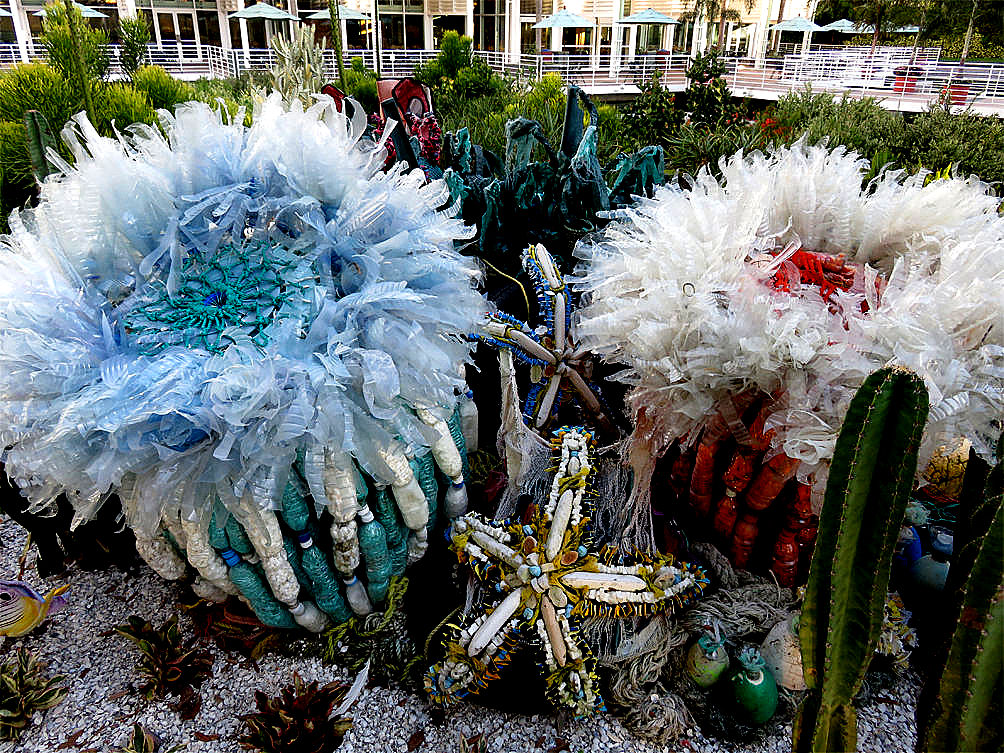Washed Ashore
Henry the Fish installation (credit: Washed Ashore)
The Washed Ashore project uses art to highlight the plight of the world's oceans. Using only discarded plastic bags, bottles, and cups that contaminate the seas and harm wildlife. The artists hope to spark changes in consumer habits regarding trash and the marine world.
The volume of plastic dumped into the oceans has now created vast gyres of floating trash on a global scale. Plastic can disintegrate into tiny pieces or microscopic sized bits that can enter the food chain. When ingested by marine mammals, turtles, fish, seabirds, and whales it can impair their ability to feed, reproduce, or kill them outright. Fish eating the dissolved plastic, produced from petro-chemicals that can act as endocrine disrupters, will concentrate the microscopic bits in their tissues that can then be consumed by people eating fish like salmon.


World Gyres Map (credit: Wikipedia) Anemone Installation (credit: Washed Ashore)
The project's founder Angela Haseltine Pozzi explains the art and its impact when on tour:
Environmental action takes many forms and art is an excellent way to connect with people. The oceans could use a lot of positive action from folks everywhere nowadays.
WHB